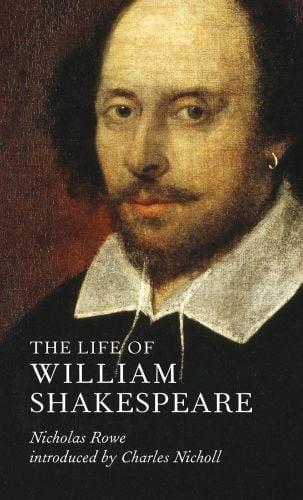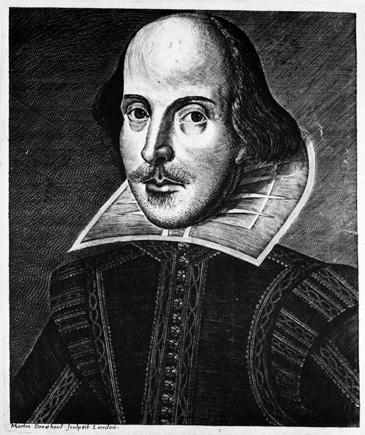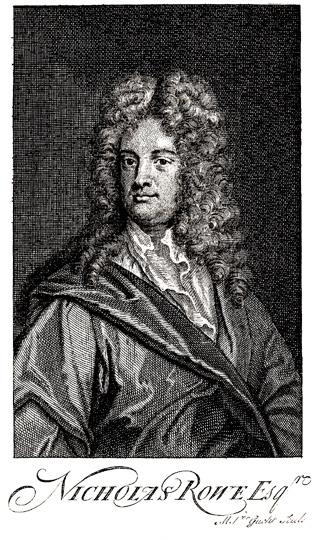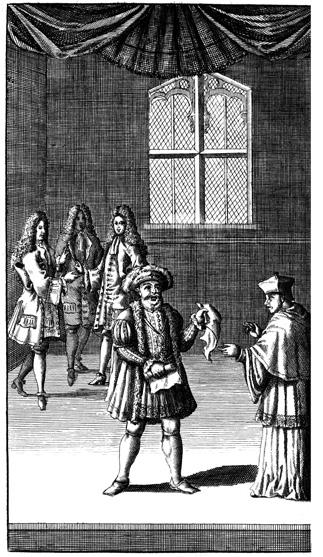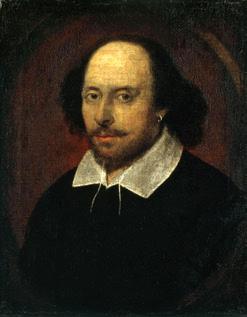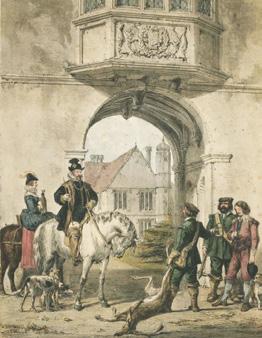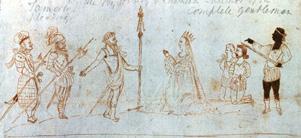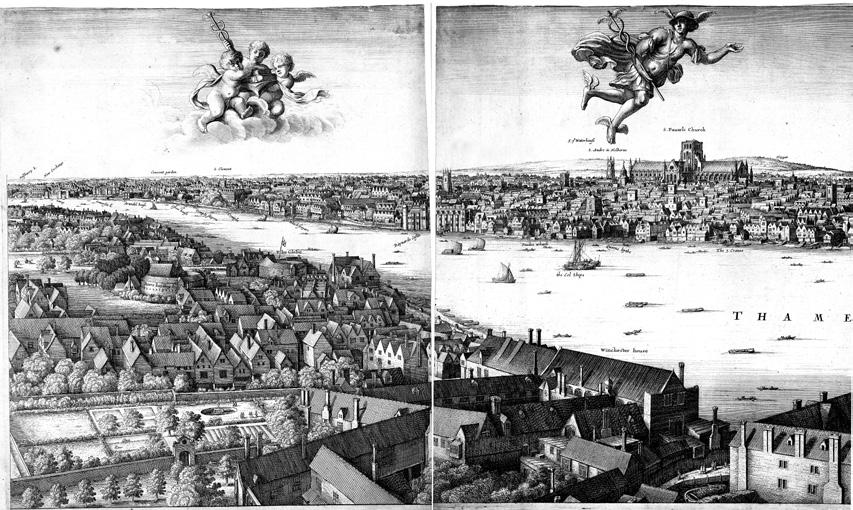THE LIFE OF WILLIAM SHAKESPEARE
Nicholas Rowe
with an introduction by Charles Nicholl
CONTENTS
Introduction
Charles Nicholl
p. 7
Note on the illustrations
p. 29
Te Life of William Shakespeare
Nicholas Rowe
p. 35
Illustration credits
p. 88
Charles Nicholl
what nicholas rowe (1674–1718) called Some Account of the Life &c of Mr. William Shakespear was written as a preface to his handsome new edition of the plays, published in six volumes in 1709. It is often described as the frst biography of Shakespeare. Tere have been many hundreds of them since – longer, weightier, more probing and indeed more factually accurate – but three centuries after its appearance Rowe’s brief biographical sketch still deserves to be taken seriously. He was writing nearly a century after Shakespeare’s death (1616), beyond the arc of living memory and frsthand testimony, and with little in the way of printed sources to draw on. Some vaguely biographical material could be gleaned from the introduction to the First Folio (1623), edited by Shakespeare‘s former colleagues, John Heminges and Henry Condell. Ben Jonson’s
Opposite: Nicholas Rowe, engraving by Michael Vandergucht after a portrait by Sir Godfrey Kneller, 1715
Timber (1640), Tomas Fuller’s Worthies of England (1662), John Dryden’s Essay of Dramatic Poesy (1668) and Gerard Langbaine’s Account of the English Dramatick Poets (1691) ofered a few scattered comments and anecdotes. Te researches of John Aubrey, an expert though not always reliable snifer-out of information, had turned up some interesting details, but they remained in a chaotic bundle of unedited manuscripts, and there is no sign that Rowe had any knowledge of them.
Tese are the antecedents of Rowe’s Account –disjointed bits of biographical information and tradition: ‘tamquam tabula naufragi’ (‘like the fragments of a shipwreck’), in Aubrey’s vivid phrase. Rowe’s is the frst to attempt to put them together,to produce a fuller narrative ‘account’ rather than just individual items – indeed the word ‘account’ conveys this, its fnancial conotation suggesting suggest a metaphorical reckoning up of a man’s life.
Te appetite which Rowe sees himself as satisfying was to some extent a new one. How ‘fond’ people are, he says, ‘for any little personal story of the great men of antiquity, their families, the common accidents of their lives, and even their shape, make and features… How trifing soever this curiosity may seem to be, it is certainly very natural.’ Nowadays we take this curiosity for
granted, but at the beginning of the eighteenth century the art of biography was still in its infancy. Its frst heyday would come some decades later, with such works as Samuel Johnson’s Lives of the Poets (1779-81) and James Boswell’s great Life of Johnson (1791). It is from this later period, and from this literary circle, that we have the frst full-length, scholarly biography of Shakespeare –Edmond Malone’s, published in 1790.
rowe ’ s biography is no match for malone ’ s, but it is an important fnger-post towards it –important as a gathering of data and impressions into something resembling a portrait of the man, and important also because of the style and panache with which it is written. Tis is not some formulaic panegyric of a great man, but something more relaxed, conversational, accessible. Rowe was in his mid-thirties when he wrote it: a literary man about town, a professional playwright – his edition of Shakespeare was itself a professional undertaking, for which the publisher, Jacob Tonson, paid him £36 10s – and a friend of the poet Pope, who spoke warmly of his ‘vivacity and gaiety of disposition’. He wrote a series of mellifuous tragedies, one of them, Jane Shore (1714), avowedly in imitation of Shakespeare. His
most popular play, Te Fair Penitent (1703), features a serial seducer, the ‘haughty, gallant, gay Lothario’, whose name remains in the language long after the play has been forgotten. It would be hard to argue that Rowe was anything but a minor author, but he was admired by Dr Johnson, who included him in his Lives of the Poets, and who praised the ‘suavity’ of his style. He was talking of Rowe’s plays, but suavity is precisely right as a description of the brisk, fuent tones of the Account.
rowe’s literary career suggests a key feature of this pioneering biography – it is a life of Shakespeare written by a man of the theatre, and drawing on theatrical knowledge and traditions about Shakespeare. An example of this is the casually profered information that Shakespeare played the part of the Ghost in early productions of Hamlet. Tis wonderful nugget is unique to Rowe, but ties in with an early tradition that Shakespeare played Adam in As You Like It –
Opposite: Te appearance of the Ghost in Hamlet, from Rowe’s edition. Te actor playing Hamlet, with stocking ‘down-gyved’, is probably Betterton, who appeared in the role for over forty years. His performances drew on traditions and memories of original Shakespearean productions (see p. 14 ); the over-turned chair, emphasizing Hamlet’s shock, may be a piece of stage business created by the frst Hamlet, Richard Burbage
these are smallish parts, and old-man parts, such as a busy, prematurely balding actor-writer might give himself.
A further aspect of this theatrical context is the important contribution made by the veteran actor Tomas Betterton, a colleague of Rowe’s who had recently played the title-role in his Ulysses (1705). ‘I must own a particular obligation to him,’ Rowe writes, ‘for the most considerable part of the passages relating to [Shakespeare’s] Life… his veneration of the memory of Shakespeare having engag’d him to make a journey into Warwickshire, on purpose to gather up what remains he could.’ Up in Stratford, Betterton consulted the parish registers and other ‘public writings relating to that town’. Tis is admirable sleuthing by the standards of the day, though in some respects rather carelessly done. It is as well to note now the faulty information which found its way into the Account. Shakespeare was not one of ten children but one of eight; and he did not have three daughters, but two daughters and a son. Betterton apparently missed the burial entry for Shakespeare’s son, Hamnet, who died in 1596, at the age of eleven. But he did note the details of Shakespeare’s marriage, and Rowe is the frst biographer to identify the poet’s wife – ‘the daughter

Tomas Betterton, engraving of 1710 after a portrait by Kneller. Te Latin tag – which translates as ‘All the world’s a stage’ –is said to have been the motto of the Globe
of one Hathaway, said to have been a substantial yeoman in the neighbourhood’.
betterton is not to be censured, however, for the apparent vagueness about Shakespeare’s birthdate, which Rowe gives only as ‘April, 1564’,
rather than the traditional 23 April. In this he is more correct than many later biographers. Te idea that Shakespeare was born on St George’s Day is a jingoistic convenience which was mooted later in the eighteenth century and swiftly became a pseudofact. Te only documentary fact is that Shakespeare was baptized on 26 April 1564: the actual day of his birth is unknown. Tomas de Quincey (who was almost as much of a connoisseur of Shakespeare as he was of opium) plausibly suggested that the wedding day of Shakespeare’s grand-daughter Elizabeth, 22 April, was chosen in memory of his birthday.
Betterton typifes the lineage of playhouse tradition which lies behind the Account. In Roscius Anglicanus (1708) John Dennis praised him for his performance in the title-role of Shakespeare and Fletcher’s Henry VIII – ‘the part of the King was so rightly and justly done by Mr Betterton, he being instructed in it by Sir William [Davenant], who had it from old Mr Lowen, that had his instructions from Mr Shakespeare himself’ –
Opposite: Frontispiece to Henry VIII from Rowe’s edition. Te King – possibly Betterton – and the Cardinal are in historical costume, the set contains a Tudor-like window, and there is even a hint of fan-vaulting about the curtain; but the attendant lords are in 18th-century dress. Unusually, the edge of the stage is shown at the bottom
Te ‘Chandos’ portrait of Shakespeare, possibly by John Taylor.
Tis is the only portrait of Shakespeare generally accepted as being painted from life
a genealogy akin to the studio lineages of Italian Renaissance painting. Betterton also appears as an early owner of the ‘Chandos’ portrait of Shakespeare, now in the National Portrait Gallery (above). According to the historian George Vertue, writing in 1719, the then owner of the painting, a barrister named Robert Keck, ‘ bought [it]
for forty guineas of Mr Betterton who bought it of Sir W. Davenant’. Rowe’s illustrators were able to use it as the basis of both the frontispiece to each volume (p. 4) and the luxury engraving that prefaced the Account itself (p. 2).
Betterton, born in 1634, had no personal knowledge of Shakespeare, but he was steeped in the texts as a performer. As Rowe says, ‘No man is better acquainted with Shakespeare’s manner of expression, and indeed he has studied him so well, and is so much a master of him, that whatever part of his he performs, he does it as if it had been written on purpose for him’. Te actor who becomes a ‘master’ of Shakespeare – as we might say, an expert – is a kind of prototype for the biographer, whose mastery of his subject is also to some extent mimetic.
among rowe ’ s notable ‘ firsts’ is his recounting of the story of the young Shakespeare poaching deer from the estates of a Warwickshire grandee, Sir Tomas Lucy of Charlecote. Sometime after his marriage, Rowe says, Shakespeare fell into ‘ill Company’. (He married in 1582, so this would have been sometime in his late teens or early twenties.) Among this company were ‘some that made a frequent practice of Deer-stealing’,
who ‘engag’d him with them more than once in robbing a Park that belong’d to Sir Tomas Lucy’, for which he was ‘prosecuted by that Gentleman’. Tis is one of those stories which sounds like pure folklore, part of the Shakespeare ‘mythos’, yet it has proved tenacious and even today has its heavyweight proponents. It received an added boost in the 1790s, when Malone found an independent manuscript account, written in the late seventeenth century by an obscure parson named Richard Davies, who said: ‘Shakespeare was… much given to all unluckiness in stealing venison & Rabbits particularly from Sr [–] Lucy who had him oft whipt’. Tis manuscript was hidden away in the archives of Corpus Christi College, Oxford, and it is extremely unlikely that Rowe had read it.
Tat the story exists in two independent early versions is, of course, no guarantee that it is true, but shows at least that there was a story. Rowe did not invent it. He goes on to note a compelling echo of the case in some badinage from Te Merry Wives of Windsor (c. 1597), where the foolish Justice Shallow accuses Falstaf of poaching from his estates – ‘You have… kill’d my deer and broke open my lodge’ – and intends to prosecute him for it. Can it be coincidence, Rowe asks, that
this Shallow is also said to ‘give a dozen white luces in the coat’ – in other words, to have a family coat of arms featuring luces (young pike), precisely the punning heraldic device used by the Lucys of Charlecote? No commentator on the Merry Wives has found a better explanation, and even great modern biographers like E. K. Chambers
A romantic view of the deer-poaching episode, by Joseph Nash, 1839 -49





t seems to be a kind of respect due to the memory of excellent men, especially of those whom their wit and learning have made famous, to deliver some account of themselves, as well as their works, to posterity. For this reason, how fond do we see some people of discovering any little personal story of the great men of antiquity, their families, the common accidents of their lives, and even their shape, make and features have been the subject of critical enquiries. How trifing soever this curiosity may seem to be, it is certainly very natural; and we are hardly satisfed with an account of any remarkable person, till we have heard him described even to the very clothes he wears. As for what relates to men of letters, the knowledge of an author may sometimes conduce to the better understanding his book: and though the works of Mr. Shakespeare may seem to many not to want a comment, yet I fancy some little account of the man himself may not be thought improper to go along with them.
He was the son of Mr. John Shakespeare, and was born at Stratford upon Avon, in Warwickshire, in April 1564. His family, as appears by the register and public writings relating to that town,
Opposite: Frontispiece to As You Like It, from Rowe’s edition
were of good fgure and fashion there, and are mentioned as gentlemen. His father, who was a considerable dealer in wool, had so large a family, ten children in all,* that though he was his eldest son, he could give him no better education than his own employment. He had bred him, ’tis true, for some time at a Free School,† where ’tis probable he aquired that little Latin he was master of; but the narrowness of his circumstances, and the want of his assistance at home, forced his father to withdraw him from thence, and unhappily prevented his further profciency in that language. It is without controversy, that he had no knowledge of the writings of the ancient poets, not only from this reason, but from his works themselves, where we fnd no traces of anything that looks like an imitation of them; the delicacy of his taste, and the natural bent of his own great genius, equal, if not superior to some of the best of theirs, would certainly have led him to read and study them with so much pleasure, that some of their fne images would naturally have insinuated themselves into, and been mixed with his own writings; so that his not copying at least something from them, may be an argument
* In fact eight, of whom two died in infancy.
† Almost certainly the Grammar School of King Edward VI
of his never having read them. Whether his ignorance of the ancients were a disadvantage to him or no, may admit of a dispute: for though the knowledge of them might have made him more correct, yet it is not improbable but that the regularity and deference for them, which would have attended that correctness, might have restrained some of that fre, impetuosity, and even beautiful extravagance which we admire in Shakespeare. And I believe we are better pleased with those thoughts, altogether new and uncommon, which his own imagination supplied him so abundantly with, than if he had given us the most beautiful passages out of the Greek and Latin poets, and that in the most agreeable manner that it was possible for a master of the English language to deliver them. Some Latin without question he did know, and one may see up and down in his plays how far his reading that way went. In Love’s Labour Lost, the Pedant comes out with a verse of Mantuan [Virgil]; and in Titus Andronicus, one of the Gothic princes, upon reading
Integer vitæ scelerisque purus Non eget Mauri jaculis nec arcu*
* Titus Andronicus iv, ii, 20-21. ‘ Te man of upright life and free from crime does not need the javelins or bows of the Moor.’ Horace, Ode 22
Te earliest drawing of a Shakespearean performance: Titus Andronicus, sketched in c. 1595
says, ’Tis a verse in Horace, but he remembers it out of his Grammar : which, I suppose, was the author’s case.* Whatever Latin he had, ’tis certain he understood French, as may be observed from many words and sentences scattered up and down his plays in that language; and especially from one scene in Henry V written wholly in it. Upon his leaving school, he seems to have given entirely into that way of living which his father proposed to him; and in order to settle in the world after a family manner, he thought ft to marry while he was yet very young. His wife was the daughter of one Hathaway, said to have been a substantial yeoman in the neighbourhood of Stratford. In this kind of settlement he continued for some time,
* Te ‘Grammar’ is Lily’s Latin grammar, Brevissima Institutio, the authorised textbook in English schools from 1542
till an extravagance that he was guilty of, forced him both out of his country and that way of living which he had taken up; and though it seemed at frst to be a blemish upon his good manners, and a misfortune to him, yet it afterwards happily proved the occasion of exerting one of the greatest geniuses that ever was known in dramatic poetry. He had, by a misfortune common enough to young fellows, fallen into ill company; and amongst them, some that made a frequent practice of deer-stealing, engaged him with them more than once in robbing a park that belonged to Sir Tomas Lucy of Charlecote, near Stratford. For this he was prosecuted by that gentleman, as he thought, somewhat too severely; and in order to revenge that ill usage, he made a ballad upon him. And though this, probably the frst essay of his poetry, be lost, yet it is said to have been so very bitter, that it redoubled the prosecution against him to that degree, that he was obliged to leave his business and family in Warwickshire, for some time, and shelter himself in London. It is at this time, and upon this accident, that
Overleaf: detail from Wenceslaus Hollar’s ‘Long View’ of London, etched in 1647 but closer than any other image to the city that Shakespeare knew. Te building marked ‘Beere bayting’ is in fact the Globe (as rebuilt after the fre of 1613); the one marked ‘Globe’ is the Hope Teatre, which replaced the bear baiting building in 1614
illustration credits
Illustrations to Shakespeare’s plays are all taken from Nicholas Rowe’s edition of the works of Shakespeare, published in 1709. See Note on the Illustrations, p. 29 for further details
Cover and p. 18: Te ‘Chandos’ portrait of Shakespeare, possibly by Joseph Taylor, c. 1610. National Portrait Gallery. Cover photograph Alamy
Endpapers and pp 40-41: Wenceslas Hollar, Long View of London from Bankside, 1647, using sketches made c. 1638
Half title: Shakespeare’s Head, printer’s emblem used by Jacob Tonson (this example from a book published in 1735)
Frontispiece: Portrait of Shakespeare from the title page of the First Folio, engraved by Martin Droeshout, 1623
Opposite table of contents: View of the Globe theatre, detail from the panorama of London engraved by Claes Jansz. Visscher, in 1616 but possibly using earlier sketches
p 8: Nicholas Rowe, engraving by Michael Vandergucht after Sir Godfrey Kneller, Bt, published 1715
p 15: Tomas Betterton, engraving by Michael Vandergucht after Sir Godfrey Kneller, Bt, published 1710
p 21: Joseph Nash, William Shakespeare brought before the magistrate at Charlecote Park, colour lithograph, 1841
p 27: George Vertue, Antiquary admiring the memorial bust of William Shakespeare in Holy Trinity Church, Stratford upon Avon, October 1737. From Vertue’s manuscript notebook A.y, BM Add. MS. 23092, fol. 17
p. 28: General frontispiece to Rowe’s edition; see p. 29
p. 32: Portrait of Shakespeare by Benoît Arlaud, engraved Gaspard Duchange, 1709; see pp. 29-30
p. 33: Heading and tailpiece of Rowe’s Life of Shakespeare from its original edition, 1709
p. 38: Henry Peacham (?), Sketch of a performance of Titus Andronicus, c. 1595 (?), Longleat
p 43: Johannes de Witt, redrawn by Aernout van Buchell, Sketch of the interior of the Swan Teatre in 1596. From Buchel’s MS Adversaria, University Library, Utrecht
nicholas rowe, born in 1674, was a writer, dramatist, poet, editor and translator. He was appointed Poet Laureate in 1715 and died in 1718
charles nicholl is the author of Te Lodger: Shakespeare on Silver Street; Te Reckoning: Te Murder of Christopher Marlowe (winner of the James Tait Black Memorial Prize for biography); Somebody Else: Arthur Rimbaud in Africa (winner of the Hawthornden Prize) among many other books
the life of william shakespeare by Nicholas Rowe
First published in 1709 under the title
Some Account of the Life &c. of Mr. William Shakespeare as the introduction to Rowe’s edition of the complete works of Shakespeare, commissioned and published by Jacob Tonson
First Pallas Athene edition published 2009 Tis edition, entirely reset and with modernised spelling and punctuation, frst published 2024 © Pallas Athene (Publishers) Ltd 2009, 2024
Introduction by Charles Nicholl © Pallas Athene (Publishers) Ltd 2009, 2024
All rights reserved
With many thanks to Patrick Spottiswoode Pallas Athene (Publishers) Ltd.
2 Birch Close, London n19 5xd
www.pallasathene.co.uk
Printed in England by TJBooks, Padstow
isbn 978 1 84368 245 5
